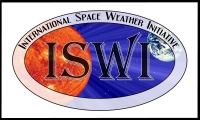Solar Flares detected by Ionospheric Effects (SOFIE)
PI: Dr. Norbert Jakowski (Institute of Communications and Navigation at DLR Neustrelitz) Germany
SOFIE (SOlar Flares detected by Ionospheric Effects) is a German student project for space weather research and aspires towards international collaboration.
The objective is to detect solar radio bursts (solar flares) by measuring continuously the intensity of VLF radio signals considering ionospheric propagation effects on radio waves. The high-energy radiation of solar flares (e.g., X-ray radiation) modifies the structure of the lower ionosphere at an altitude of 60 – 150 km/ 35-95 miles. The changed conditions for radio wave propagation are immediately measurable as variations of the receiving intensity using a convenient receiver. Apart from possible signal interferences, the recorded signal strength maps directly the temporal variations of solar flares, with a remarkable precision.
Figure 1. Typical record of an undisturbed VLF signal (top) in comparison with a VLF signal modified by a solar flare event on the 11th of August 2012.
By simple measurements of radio propagation, it is possible to detect practically solar flares, which are often a precursor of space weather storms. Due to the simplicity of the measuring principle, SOFIE is entirely suitable as an educational project. Furthermore, it introduces scientific problems and has great potential for the development of working and thinking scientifically.
Background and current state
Since the beginning of 2012, SOFIE has been one of the educational projects supervised by the DLR_Project_Lab Neustrelitz. It replaces the student project SIMONE, which was initiated in collaboration with the University of Goettingen as part of national activities of the International Heliophysical Year ( http://www.ieap.uni-kiel.de/et/ag-heber/ihy2007/aktivitaeten/simone/)
At the beginning of SIMONE in year 2007, SID-monitors were used which were developed by the University of Stanford and sponsored by EADS Astrium (http://solar-center.stanford.edu/SID/sidmonitor/). The SID-monitor is part commercial VLF-receiver that is aligned on a frequency of 24,00 kHz. Thereby, the receiver detects the signal strength of the radio waves emitted by the powerful (≈1000 kW) transmitter Cutler (Maine/USA).
Meanwhile, a specific SOFIE VLF-receiver has been developed in the DLR_Project_Lab. SOFIE RX communicates directly via internet with the SWACI server for ionospheric services. So, this receiver doesn’t require an additional computer to collect and upload data. For schools, the receiver is available as a construction kit.
Measuring instruments
To record solar radio bursts the DLR_Project_Lab Neustrelitz developed a specific VLF receiver named SOFIE RX, in collaboration with the training workshop of the air force Neubrandenburg – Trollenhagen (field of electronics). For the participating schools, the receiver is aligned to different frequencies (Table below). Hence, the SOFIE RX of a school detects the signal strength of radio waves emitted by a powerful transmitter. Solar radio bursts (solar flares) are characterized by significant changes of the signal strength.

The receiver – SOFIE RX
The installation of a SOFIE RX and the antenna requires only a power supply, an internet connection and an appropriate undisturbed place. Among other things, local interferences are caused by many electric devices, televisions or big receivers (for instance fire stations) in the surrounding of the receiver. This exhibits a huge amount of background radiation and affects a good receiving. The SOFIE receivers come with an integrated microcontroller, which establishes an internet connection and transfers the data to a server of the DLR_Project_Lab. The young students can see, share and edit directly the measurement results via a web portal. The SOFIE receiver doesn’t require an additional computer.
Figure 2. SOFIE_RX front view
Figure 3. SOFIE_RX electronics
Figure 4. Working principle of the SOFIE server
The lower scheme shows the working principle of the SOFIE server. The high frequency (HF) signals detected by the antenna are processed by a preamplifier before passing the filter. The filter is a variable unit and can be adjusted easily to various frequencies of interest. This narrow band filter provides the VLF signal for a selected frequency. After level adjustment is done the data is sent to the web server and finally to the internet (web portal).
The receiving antenna
In order to record radio waves, the SOFIE receiver requires a loop antenna. It can be constructed with a small diameter (< 1 meter wide) and lots of loops or with a larger diameter and less loops. However, keep in mind that a larger diameter of the antenna with less loops ensures a more accurate data record. (Example: 25 loops on a 2 meter frame are better than 50 loops on a 1 meter frame.)
Figure 5. (left) antenna built by students; (center and right) antennas of the DLR_Project_Lab Neustrelitz.
The antenna can be made out of crossed bars, wood ledges or other non-conductive materials. The number of frame edges is not important. Figure 5 (left) illustrates a simple but effective quadratic antenna built by students. The antenna of the DLR_Project_Lab Neustrelitz is a pentagon with an edge length of 1 meter, wound by a 1.5 mm copper wire 75 times.
The best location for the antenna would be on a roof or at least outside. Considering that it should be protected from lightning strikes (which may cause damage) one can set up the antenna inside, close to a window.
Read more about the SOFIE Project at http://www.projectlab-neustrelitz.de/site/en/sofie.html
